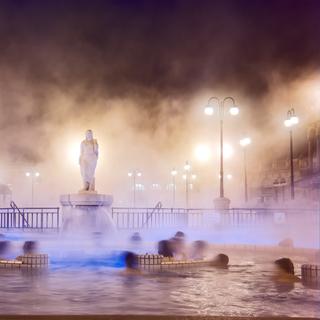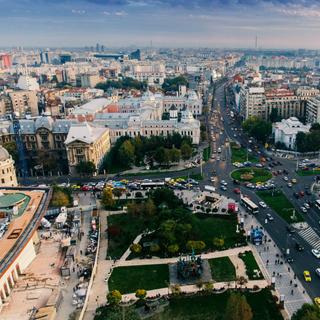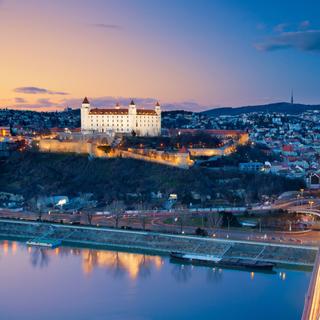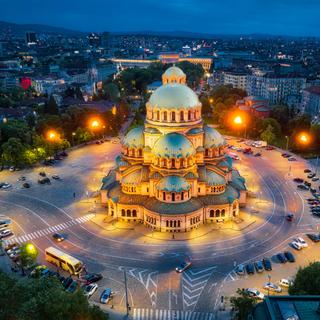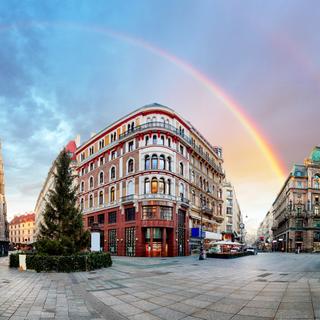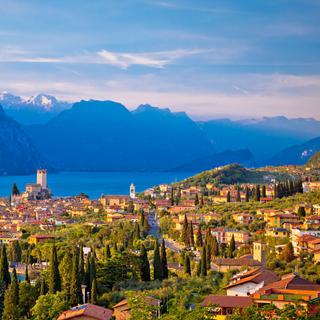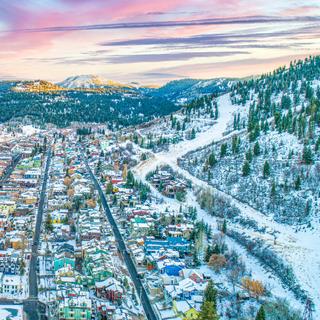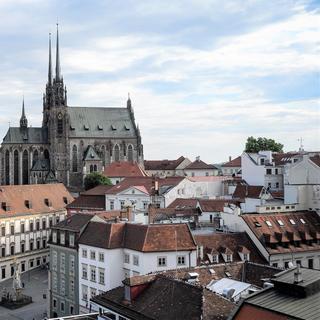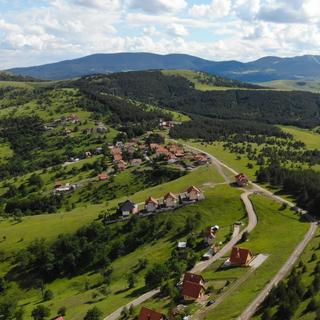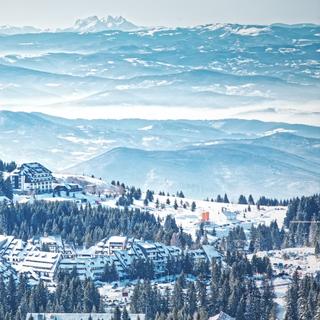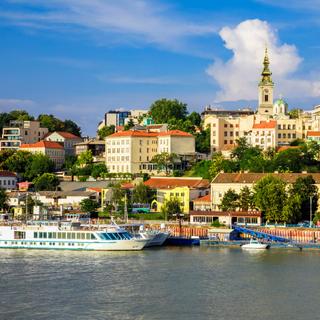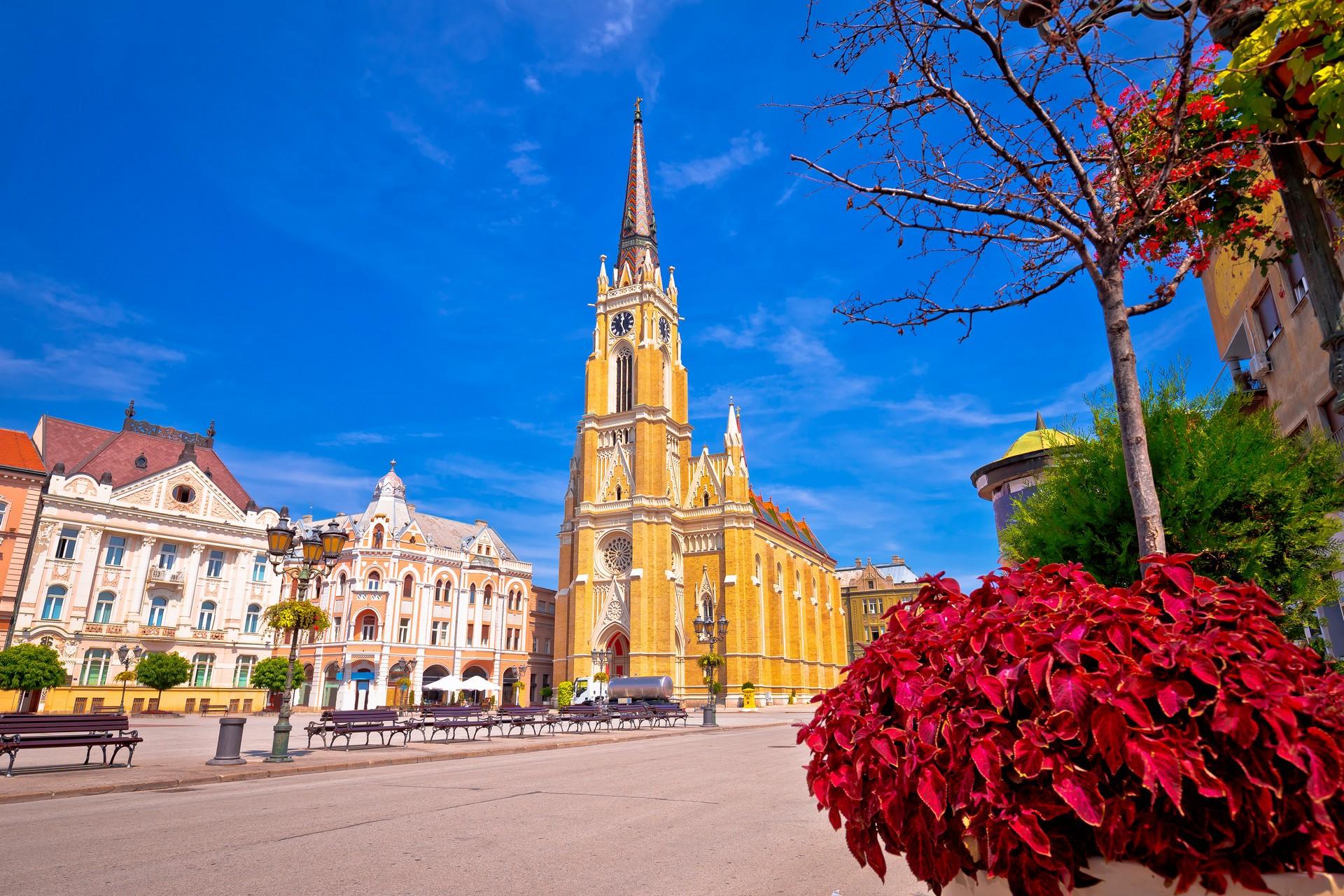
Novi Sad weather and climate

Novi Sad weather and climate
Day
29 °C
Night
16 °C
Precipitation
59 mm
in month
Rainy days
9 days
in month
Daylight
15 hours
average
Sunshine
9 hours
average
Humidity
66 %
Weather charts for Novi Sad

Find more destinations like this
Destinations with similar weather to Novi Sad
Other destinations in Serbia
Closest cities for Novi Sad
Weather overview for Novi Sad
Weather overview
The city of Novi Sad, located in Serbia, typically experiences a temperate continental climate. This region sees a range of temperatures throughout the year, from chilly winters with average daytime highs of 4 °C (39 °F) in January to warm summers peaking at 29 °C (84 °F) in July. The month witnessing the fewest rainy days is October, averaging only 7 days. Conversely, June tends to be the most precipitous month with an impressive 11 days. As the night enfolds the city, the highest temperatures can be found in July, reaching 16 °C (60 °F), while the coldest nights take place in January, when temperatures plummet to a low of -3 °C (27 °F).
January weather
In January, Novi Sad experiences the lowest daytime temperatures of the year, averaging 4 °C (39 °F), and the nighttime temperatures dip to their lowest as well, with an average of -3 °C (27 °F). Sunlight hours begin to increase in this period. The wind speeds also reach their lowest average of 2. A decline in rainfall starts to become apparent during this month.
February weather
February in Novi Sad is characterized by the commencement of a gradual increase in daytime temperature and a continued elevation of sunshine hours, noted at 3 hours. Meanwhile, the minimal rainfall amount of approximately 33 mm (1.31 in) marks the month.
March weather
March sees a further rise in daytime temperatures, averaging 12 °C (53 °F), and nights also begin to grow warmer. The month marks the onset of increasing rainfall and peak wind speeds, averaging 3. Sunlight hours continue to improve, reaching 5 hours.
April weather
April witnesses a continued upward trend in both day and night temperatures, reaching 18 °C (64 °F) and 6 °C (44 °F), respectively. The number of rainy days begins to rise, noted at 9 days. Sun hours, akin to earlier months, continue to ascend and humidity hits an annual low.
May weather
With the onset of the tourist season in May, there's a noticeable rise in both day and night temperatures. Rainfall begins to intensify, with an average of 61 mm (2.41 in), and the number of rainy days also increases, averaging 11 days. The duration of sunlight continues to increase steadily.
June weather
June, the brink of the tourist season, witnesses a continuation of rising temperatures and marks the peak of rainy days for the year with 11 days. Day length also reaches its zenith.
July weather
The bustling tourist season in July brings with it the highest day and night temperatures of the year, along with a decline in both the number of rainy days and overall rainfall. The maximum sunlight hours can also be observed during this time.
August weather
As the tourist season continues into August, the twilight's warmth starts to wane slightly. The abundance of sunshine also begins to decrease, and rainfall episodes continue to subside.
September weather
September's pleasant climate is marked by a gentle decline in temperatures and daylight hours, alongside a modest reduction in the amount of rainfall.
October weather
With the tourist season still ongoing in October, daytime temperatures begin to drop further, mirrored by the night temperatures. Rainy days reach their annual minimum, and less sunlight is experienced as the days shorten.
November weather
November sees the onset of cooler weather as both day and night temperatures continue to decrease. An increase in the number of rainy days is observed, and less sunshine is available.
December weather
In December, Novi Sad experiences some of the coldest weather of the year, with daytime temperatures dropping further. The shortest days and minimum sunlight hours coincide with this chilly period, and there's a noticeable increase in humidity.
FAQs
What is the average amount of sunshine in Novi Sad during January?
The average sun hours in Novi Sad during January amount to 2 hours.
Is February a dry month in Novi Sad?
While February isn't the driest month, it's relatively dry in Novi Sad with about 8 days of rainfall.
How does rainfall change in March compared to previous months in Novi Sad?
Rainfall begins to increase in March in Novi Sad, as evidenced by an average rainfall of 43 mm (1.68 in).
How does the humidity level in April affect the overall weather in Novi Sad?
In April, Novi Sad experiences relatively low humidity at about 65 %, which can make the air feel more comfortable.
What kind of weather should visitors expect in Novi Sad during May?
Visitors to Novi Sad in May can anticipate warm days with temperatures around 23 °C (74 °F) and moderate rainfall.
What are the chances of experiencing rain in Novi Sad during June?
In June, it's quite likely to encounter some rainy days in Novi Sad, with the average number of wet days at 11 days
How much sunshine can visitors enjoy in Novi Sad during July?
During July, visitors to Novi Sad can relish in the sunlight for an average of 9 hours a day.
Will I need an umbrella often in Novi Sad during August?
Umbrellas might not be a daily necessity in August in Novi Sad, as rain is expected on only around 8 days.
As summer ends, how does September's weather transition in Novi Sad?
As autumn approaches, September sees a gentle decrease in both temperatures and rainfall, indicating a change of season in Novi Sad.
Is October a comfortable month to explore Novi Sad?
October offers a relatively comfortable climate for outdoor exploration in Novi Sad, with mild temperatures and minimal rainfall.
How do cooler temperatures in November affect outdoor activities in Novi Sad?
The cooler climate in November in Novi Sad may require warmer clothing for outdoor activities, with daytime averages around 10 °C (50 °F).
What is the daylight duration in Novi Sad during December?
December days in Novi Sad are quite short, averaging about 9 hours of daylight.
